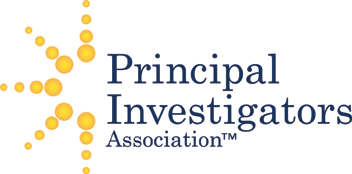|
The primary objective of the NSF SBIR Phase I and Phase II Programs is to increase the incentive and opportunity for small firms to undertake cutting-edge, high-risk, high-quality scientific, engineering, or science research that would have a high-potential economic payoff if the research is successful. That’s pretty clear.
Unfortunately, producing SBIR Phase I and Phase II proposals isn’t as straightforward as we would like, and many scientists struggle with crafting an effective proposal. Some key questions scientists are faced with include: What level of detail should be included in a SBIR Phase I and Phase II proposal? What are the key differentiators the Review Panelist and Program Directors look for? How do timing, market dynamics and strength of personnel affect proposal outcomes? And, which category should my proposal be submitted under?
Get expert answers to your toughest questions and increase your funding chances by taking advantage of this unique educational pack! It includes a 60-minute On-demand Webinar in your preferred format and 2 executive reports in PDF format.
|
60-Minute On-demand Webinar: How to Produce a Winning SBIR Phase I and Phase II Proposal
During this insightful Webinar, your expert presenter will reveal insider strategies you can implement to increase your chances for funding. Gain answers to the most commonly asked questions; learn what inspires Review Panelists and Program Directors the most, and much more.
5 Key Take-Aways:
- Key Points NSF SBIR Phase I Proposals Must Cover
- Key Points NSF SBIR Phase II Proposals Must Cover
- Best Practices in Developing NSF SBIR Phase I and Phase II Proposals
- Idea Structure for a NSF SBIR Phase I and Phase II Proposal
- Sample Template for NSF SBIR Phase I and Phase II Proposals
Choose your preferred format: CD-Rom, MP4 or PDF Transcript. All formats include the presentation handouts.
Meet Your Presenter:
|
Anthony J. Rhem, PhD, serves as President/Principle Consultant of A.J. Rhem & Associates, Inc a privately held Information Systems Integration and Training firm located in Chicago, Illinois. Anthony is an Information Systems professional with thirty (30) years of experience. Dr. Rhem has been involved with the National Science Foundation (NSF) Small Business Innovative Research (SBIR) Phase I and Phase II grant funding process as a review panelist since 2004. As a Principle Investigator (researcher) Dr. Rhem has been awarded a Small Business Innovative Research (SBIR) phase I grant and has participated in several research projects playing an integral role in successfully commercializing software methodologies, and software products. |
|
11-pg. Executive Report:
Are SBIR and STTR Grants Right for You?
Before you begin your proposal, you must first evaluate in-depth whether the Small Business Innovation Research (SBIR) and Small Business Technology Transfer (STTR) program grants are right for you. In fact, SBIR and STTR grants are tailored to specific projects with an eye toward commercialization.
The most important aspect to SBIR and STTR is that they’re not research programs — they’re economic development programs. They aren’t designed for typical basic academic research, but instead are for commercial application research and development (R&D).
Under the SBIR program, the U.S. government agencies set aside funding to assist small businesses develop
innovative ideas into commercial ventures. To be eligible for this grant, the small business must be American-owned, independently operated, for-profit and employ fewer than 500 people.
STTR, on the other hand, is a cooperative research partnership between small businesses and researchers. It’s different from SBIR in two ways:
1. STTR places greater emphasis on commercial success, which results in federal agencies more stringently
evaluating applicants.
2. It requires researchers to team with businesses to get products to the market…find out more inside this report.
|
|
11-pg. Executive Report:
Secrets of SBIR Cost Portion—How to Project the Right Indirect Rate for You
This report will help you submit a Small Business Innovation Research (SBIR) Phase II grant application to federal funders such as National Institutes of Health (NIH), National Science Foundation (NSF) and the U.S. Department of Defense (DOD).
You will learn how to distinguish indirect costs from direct costs, choose the appropriate facilities and administration (F&A) rate, and calculate billing rates. This report also includes guidelines for formulating a cost projection, tips for surviving the audit process, and answers to common questions about SBIR Phase II grants.
Estimating Your Costs
When you submit an SBIR Phase II grant application, you must state your estimated costs. The review panel
looks at how many people you’ll employ, how many hours you’ll work, what materials you’ll use and what tests you’ll conduct. The reviewers might ask you questions about your costs, but they have no insight into your indirect costs. The funding agency has no idea whether your operation is a “coat room,” i.e., requires a place to hang your coat while you work on a computer, or a “clean room,” meaning it requires a substantial number of employees and specialized equipment. This is why you must include your indirect costs, or F&A costs, in your application…find out more inside this report.
|
|




